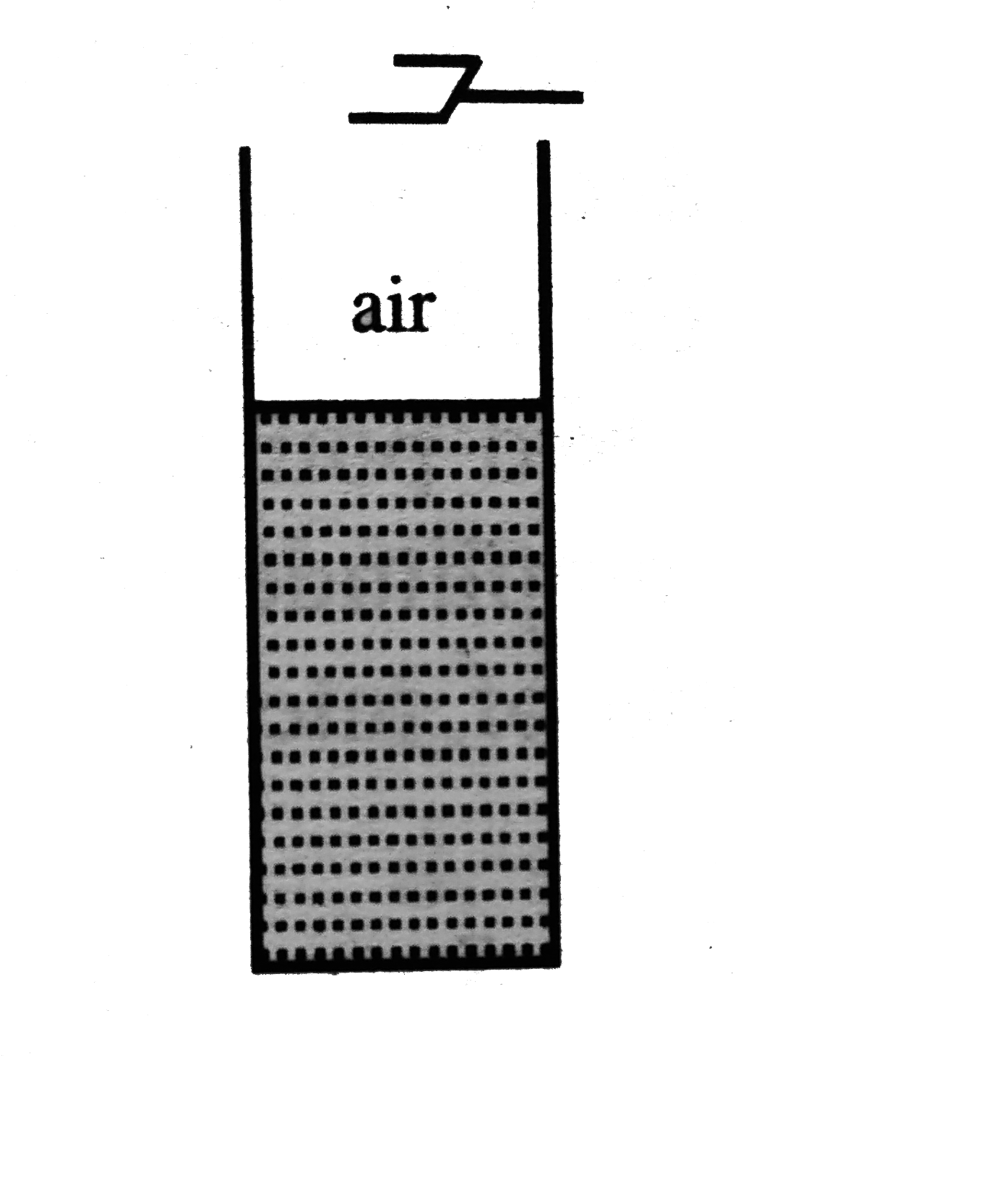A tuning forke is in unison with a resonance column of length 17 cm. When the length is increased by 1 mm, three beats are heard in one second. What is the frequency of the fork? Neglect the end correction?
The correct Answer is:n1×17=(n1−3)×17.1, solving n1=513Hz.
To solve the problem, we will follow these steps:
Step 1: Understand the relationship between frequency and length
We know that the frequency (f) of a tuning fork is inversely proportional to the length (L) of the resonance column when tension (T) and mass per unit length (μ) are constant. This can be expressed as:
f∝1L
This means that:
f1L1=f2L2
where f1 and L1 are the frequency and length of the first condition, and f2 and L2 are the frequency and length of the second condition.
Step 2: Set up the known values
From the problem:
- Initial length L1=17 cm = 0.17 m
- Increased length L2=17.1 cm = 0.171 m (since 1 mm = 0.001 m)
- Let the frequency of the tuning fork be f (in Hz).
- The frequency corresponding to the increased length will be f−3 Hz (since 3 beats are heard).
Step 3: Apply the frequency-length relationship
Using the relationship established in Step 1:
f⋅L1=(f−3)⋅L2
Substituting the values:
f⋅0.17=(f−3)⋅0.171
Step 4: Expand and rearrange the equation
Expanding the equation gives:
0.17f=0.171f−0.513
Now, rearranging this yields:
0.171f−0.17f=0.513
0.001f=0.513
Step 5: Solve for the frequency
Now, divide both sides by 0.001:
f=0.5130.001=513 Hz
Conclusion
The frequency of the tuning fork is 513 Hz.
---
We know that the frequency (f) of a tuning fork is inversely proportional to the length (L) of the resonance column when tension (T) and mass per unit length (μ) are constant. This can be expressed as:
f∝1L
This means that:
f1L1=f2L2
where f1 and L1 are the frequency and length of the first condition, and f2 and L2 are the frequency and length of the second condition.
From the problem:
- Initial length L1=17 cm = 0.17 m
- Increased length L2=17.1 cm = 0.171 m (since 1 mm = 0.001 m)
- Let the frequency of the tuning fork be f (in Hz).
- The frequency corresponding to the increased length will be f−3 Hz (since 3 beats are heard).
Using the relationship established in Step 1:
f⋅L1=(f−3)⋅L2
Substituting the values:
f⋅0.17=(f−3)⋅0.171
Expanding the equation gives:
0.17f=0.171f−0.513
Now, rearranging this yields:
0.171f−0.17f=0.513
0.001f=0.513
Now, divide both sides by 0.001:
f=0.5130.001=513 Hz
The frequency of the tuning fork is 513 Hz.
Topper's Solved these Questions
- BOOK - ICSECHAPTER - WAVESEXERCISE - From Doppler Effect16videos
WAVES
- BOOK - ICSECHAPTER - WAVESEXERCISE - From Musical Sound10videos
WAVES
- BOOK - ICSECHAPTER - WAVESEXERCISE - From Organ Pipes22videos
WAVES
- BOOK - ICSECHAPTER - VECTORS SCALARS ELEMENTARY CALCULUS EXERCISE - UNSOLVED PROBLEMS79videos
VECTORS SCALARS ELEMENTARY CALCULUS
Similar Questions
A stretched sonometer wire is in unison with a uning fork. When the length is increased by 2% the number of beats per second is 5. Find the frequency of the forks.
View SolutionA turning fork is sounded together with a stretched sonometer wire of length 50 cm. When the tension in the wire is 100 N, 4 beats are heard. Find the frequency of the tuning fork if the same number of beats are heard when the tention in the wire reduced to 81 N.
View SolutionA tuning fork A is in resonance with an air column 32cm long and closed at one end . When the length of this column is increased by 1cm,it is in resonance with another fork B. When AandB are sounded together , they produce 40beats in5s. Find their frequencies .
View SolutionFrequencies of two tuning forks are in the ratio 20:21. When sounded together 8 beats are heard per second. What are their frequencies :
View SolutionA tuning fork of frequency 200 Hz is in unison with a sonometer wire . Tension is the wire of sonometer is increased by 1% without any change in its length . Find the number of beats heard in 9 s.
View SolutionA tuning fork is in unison with 1.0 m length of sonometer wire. When the stretching weights are immersed in water, the length of the wire in unison with the same tuning fork is 0.934 m. Calculate the density of the material of the weights ?
View SolutionA tuning fork is in unison with a sonometer wire 80 cm long. If 2 beats are heard on shortening the wire by one centimeter find the frequency of the fork?
View SolutionA resonance occurs with a tuning fork and an air column of size 12cm. The next higher resonance occurs with an air column of 38cm. What is the frequency of the tuning fork ? Assume that the speed of sound is 312m/s.
 View Solution
View SolutionIn the experiment for the determination of the speed of sound in air using the resonance column method, the length of the air column that resonates in the fundamental mode, with a tuning fork is 0.1m. When this length is changed to 0.35m, the same tuning fork resonates with the first overtone. Calculate the end correction.
View SolutionIn the experiment for the determination of the speed of sound in air using the resonance column method, the length of the air column that resonates in the fundamental mode, with a tuning fork is 0.1m. When this length is changed to 0.35m, the same tuning fork resonates with the first overtone. Calculate the end correction.
View Solution

